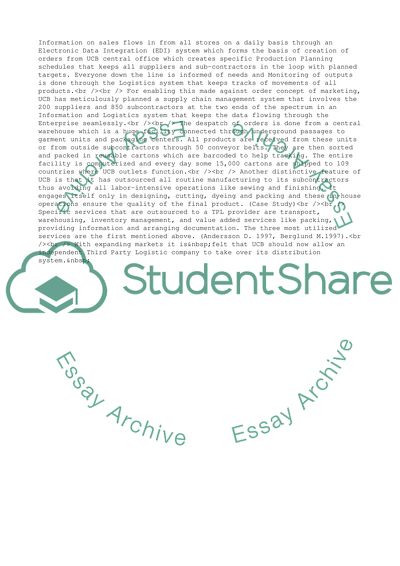Cite this document
(United Colours of Benetton Case Study Example | Topics and Well Written Essays - 2000 words, n.d.)
United Colours of Benetton Case Study Example | Topics and Well Written Essays - 2000 words. Retrieved from https://studentshare.org/business/1710408-strategic-logistics
United Colours of Benetton Case Study Example | Topics and Well Written Essays - 2000 words. Retrieved from https://studentshare.org/business/1710408-strategic-logistics
(United Colours of Benetton Case Study Example | Topics and Well Written Essays - 2000 Words)
United Colours of Benetton Case Study Example | Topics and Well Written Essays - 2000 Words. https://studentshare.org/business/1710408-strategic-logistics.
United Colours of Benetton Case Study Example | Topics and Well Written Essays - 2000 Words. https://studentshare.org/business/1710408-strategic-logistics.
“United Colours of Benetton Case Study Example | Topics and Well Written Essays - 2000 Words”. https://studentshare.org/business/1710408-strategic-logistics.


